Last year, I devoted a lot of time to researching and learning as much as possible about the many different varieties of tea. I have posted an introduction to tea, a brewing guide, and in-depth articles about black, oolong, and green teas.
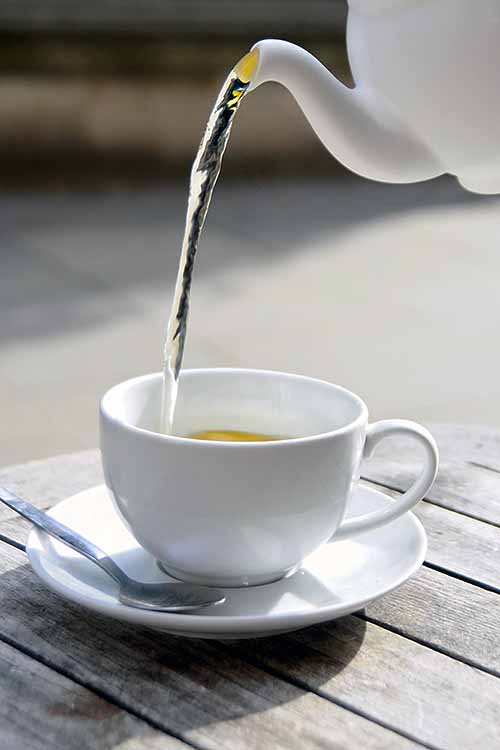
Now I’m back with my latest tea article, where I take a closer look at white tea. I’ve realized that this is a tea that many people know very little about, if they are familiar with the variety at all. With any luck, that’s about to change!
Keep reading – white tea may soon become your favorite variety!
A Brief Description
The name “white tea” refers to the silvery-white hairs that cover the unopened leaf buds on tea plants.
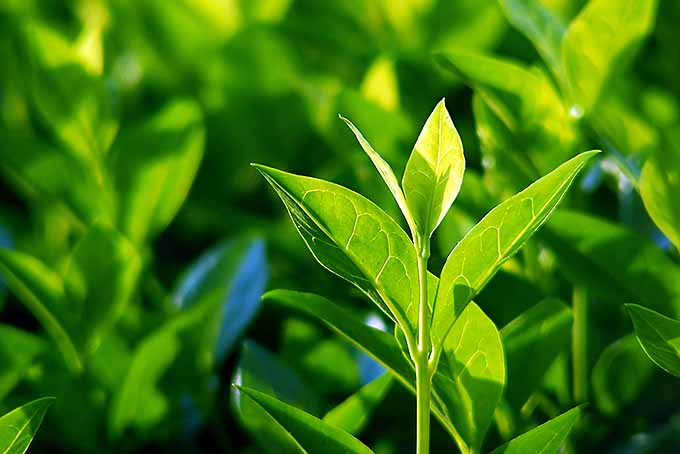
They give the plant a white appearance, but the drink itself isn’t white at all. Instead, it’s a pale golden yellow.
What separates it from the other varieties is that there is typically no heat introduced to the leaf, other than the sun’s rays. Other types are fermented, steamed, or pan-fired in processing, to transform the raw leaves into a product that’s ready for steeping.
The leaves are harvested late in the morning, after the sun has dried all the dew from the plants. They are then laid in shallow baskets and allowed to wither in the sun for several hours. Next, the leaves are collected and allowed to dry further indoors.

That’s all there is to it!
Going back to the time of the Song Dynasty (960-1279 AD), white tea was historically produced exclusively in the Fujian province of China. This is still the primary production area, but now you will find white tea producers in Nepal, Taiwan, Thailand, Sri Lanka, and India. There are a handful of American producers as well.
For the most part, it was unknown outside of Asia. As growing numbers of people learn of the powerful medicinal qualities of this beverage, the white variety is becoming more widely known across the rest of the world.
Health Benefits
My post on green tea (that I referred to above) describes the ridiculous amount of potential health benefits that green tea in particular possesses. An important reason for associating so many medicinal qualities with the green type is that it is the variety that has been most rigorously studied by modern science.
Further, the reason that green tea has so many powerful qualities is that it has been so minimally processed that the natural antioxidant levels of the plant aren’t destroyed.
Like green, white tea is also minimally processed – but even less so, meaning it is even richer in antioxidants.
As I have covered in previous articles, antioxidants are nutrients that help shield the body from the formation of free radicals. A free radical is an atom with an odd number of electrons, and once formed, these reactive atoms start a chain reaction, potentially causing damage to healthy cells in the body.
This damage can speed up the aging process, potentially contributing to the onset of heart disease, Alzheimer’s, Parkinson’s, and even the formation of cancer cells.
Because processing is minimal, white tea has the highest levels of antioxidants out of all the tea varieties. It’s literally teeming with them!

And though the majority of scientific studies have been done on green tea, it’s only logical to assume that anything that green is good for, the white variety would be even better for.
For example, white offers a large quantity of flavonoids, a phytonutrient sometimes referred to as a sub-class of antibiotics. Flavonoids are especially potent at inhibiting the growth of cancer cells, and even preventing new ones from forming.
It has even been shown to destroy cancer cells completely. A study done in 2000 at Pace University showed cancer tumors in mice decreased by over 50%.
Catechins are another health-promoting antioxidant found in white tea, and these have been shown to help significantly lower cholesterol levels. White tea is brimming with catechins, and drinking two cups of it a day can not only help to keep your arteries clear, studies have even shown a reduction in the risk of heart attack up to 50%.
A study done in Holland over 10 years with 1,000 participants showed that heart disease risk was cut by 50% by drinking two or more cups a day. This could be especially enticing to anyone with a family history of high cholesterol or heart problems!
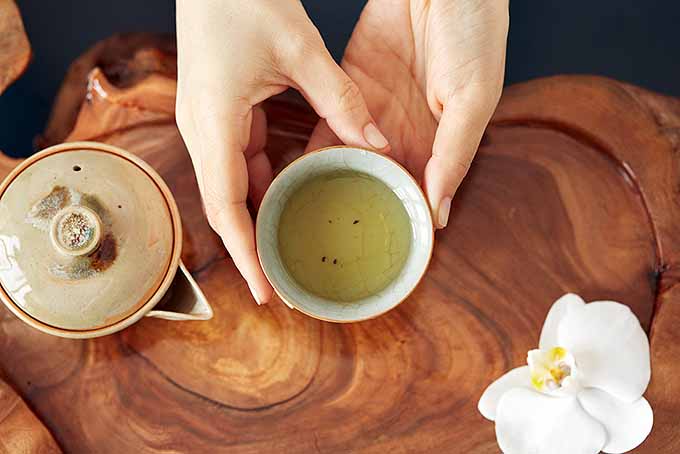
There are a few other great advantages that come from drinking white tea regularly. As with green, the white variety serves as a preventative against bacteria and viruses, but it is even more potent.
A 2007 joint study conducted by the University of Sheffield in England and Baylor University in Texas showed great promise for tea to be used in the treatment of HIV. EGCG, a catechin found in large amounts in both green and white types, was found in test tube experiments to bind to CD4 immune system T-cell receptors.
If a cell was already bonded with EGCG, this prevented the HIV virus from bonding to the cell. This startling discovery means that drinking green or white tea regularly could help to limit the spread of the virus, as well as potentially easing symptoms for those already infected.
Another study done in Germany in 2009 showed that this amazing drink not only helps to prevent the development of new fat cells, but also helps to break down existing ones. While this study was only done by treating lab-cultured fat cells with white tea extract (with no tests conducted on human subjects) and further study is still needed, the results suggest promise for weight loss and weight management.

Now that I’ve given you a little more background information on this particular tea variety, let’s look at a few different types of white tea to try at home.
Bai Hao Yinzhen (Silver Needle)
Produced in Fujian, the famed tea-making province of China, this is the most expensive and highly prized Chinese white tea.
Genuine Silver Needle comes from the Da Bai (Large White) cultivar of the tea plant, though some knockoffs are sold that are made from other plant varieties.
The real deal, which is only produced in the Fujian province, is considered one of the Chinese famous teas, and for centuries it was reserved for use by the imperial family.
The highest quality Silver Needle is harvested in the early spring, in March or April. Only the first leaf shoots and buds of the year are plucked for the “first flush” harvest.

The resulting drink is just as light and delicate as you would imagine, with a subtle flavor of honeysuckle and a hint of white grapes in the background.
The liquid is pale yellow, almost an ivory color.
This is a very refreshing and sweet beverage, perfect to enjoy on warm spring and summer mornings.
What to Buy
Tealrya’s organic Silver Needle is a great choice. Described as woodsy, floral, and complex, it’s naturally sweet.
Tealrya Premium White Silver Needle
Others report jasmine overtones and brewing times for up to eight minutes for a more flavorful cup. Available on Amazon.
Bai Mudan (White Peony)
While Silver Needle is made with only the leaf buds, and occasionally the shoots, White Peony includes a bud and the two young leaves closest to it.
It is also harvested in the first flush of the year, in early spring. The leaves are allowed to wither for 1-3 days and then oxidized for 1-3 hours. This process lets the oxygen start to break down the structure of the leaves after they are removed from the plant.

Interestingly, unlike the most famous type of white tea, White Peony is then baked very briefly to further dry the leaves. Because of this additional step in the processing, it has a fuller and stronger flavor than other varieties.
It should have no bitterness to it at all, and is completely lacking in grassy undertones. It’s also known for having earthy notes, and perhaps even a hint of nuttiness. Most of the time, the liquid will be golden, but occasionally it may be a very pale green.
What to Buy
If Silver Needle is too light for you, this is a great alternative. It has a mild and fruity flavor with a floral aroma. We like Tattle Tea’s Organic White.
Tattle Tea Organic Bai Mu Dan White, Loose Leaf, 1 Pound
This loose leaf tea has a clean flavor, with no bitterness.
Check current prices and customer reviews now on Amazon.
Shou Mei (or Gong Mei)
While the highest quality white teas only use the first leaves and buds of the season, Shou Mei is harvested later. It is made with the leaves that come after the first harvest.
Thus, it is technically a byproduct of Silver Needle or White Peony, and is considered a lower quality grade of white tea.
What to Buy
With Shou Mei, you will get a darker green color and a deeper, stronger flavor in your brew, more reminiscent of an oolong than a traditional white.

It has a nice fruity flavor and aroma, but be careful not to let the leaves steep for too long or you will end up with a bitter brew.
Gushan Baiyun (Drum Mountain White Cloud)
Grown on the lofty peaks of Drum Mountain in the Fujian province, this special tea was grown by Buddhist monks at their monastery for centuries.
They used it to help maintain their mental clarity and help with their meditation practices. Of course, we can get those same benefits today, as well.
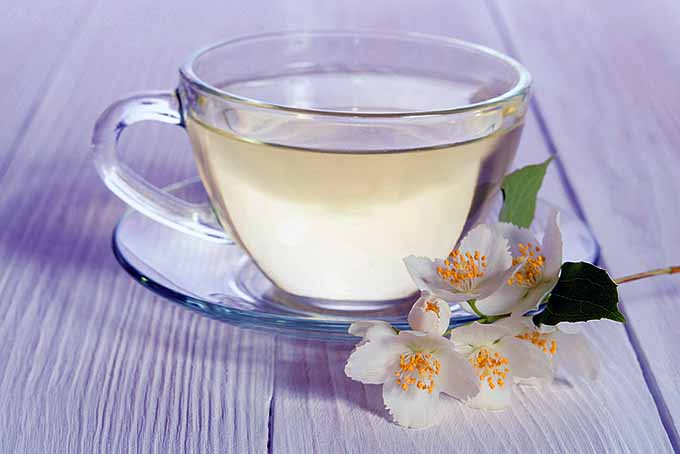
This a very high quality Bai Mudan tea, with a very smooth feel in the mouth and no astringency whatsoever.
Gushan Baiyun is sweet and it may have a nutty taste or the flavor of coconuts, with a honey-like aroma.
What to Buy
Mild, sweet, and a touch nutty, you don’t need to worry about bitterness if you accidentally overbrew this type.

The Fragrant Leaf, Drum Mountain White Cloud, 4 oz.
We recommend The Fragrant Leaf’s Drum Mountain White Cloud, available on Amazon. Again, this is another very refreshing and soothing drink.
White Darjeeling
While most of us think of Darjeeling as a black tea, it is also available as a white. With the rising popularity of white tea outside of China, the Darjeeling producers decided to jump on board and recently started making their own version.

Coming from a different cultivar of the Camellia sinensis plant than what it typically grown in China, the flavor of white Darjeeling is quite different as well.
This variety has the same delicate aroma and pale golden color as Silver Needle, but the taste profile is definitely more on the fruity side, with a muscatel quality similar to black Darjeeling.
“Muscatel” simply describes a dried fruit flavor (think raisins) that has an accompanying dryness to it (think wine).
What to Buy
Fragrant with green flavor notes, this is a clean brew that many tea drinkers will enjoy.

Singbulli Darjeeling White, 100 g.
We recommend this first flush loose leaf tea from the Singbulli estate in India, available on Amazon.
White Assam
Newest to the white tea party are the Assam growers in India. They make their own version of Silver Needle, and in looks it compares pretty well to the Chinese original.
Harvested from the Assamica cultivar of the tea plant, it has a different flavor profile that works really nicely as a white tea.
When it comes to White Assam, the liquid itself is pale gold, a bit darker than the Chinese versions of the drink. Expect a fruity and sweet aroma, with a rich, bold flavor.
What to Buy
White Assam can be difficult to find outside of specialty tea shops, but not impossible.
Octavius Assam White Loose Leaf Premium in Tin Box
Though this variety typically has the same malty finish as its black counterpart, we recommend these leaves from Octavius that leave a sweet finish on the palate. Available on Amazon.
I should also point out that, just as Assam or Darjeeling may be used to make the black tea blends of British or Irish Breakfast and Earl Grey, you can also find white versions of both of these.
Brewing Tips
Being made from just the leaf buds and the youngest and smallest leaves, white tea is much lighter and fluffier than the other tea varieties. With that in mind, most producers recommend that you use roughly double the amount of loose leaf tea to brew your beverage.
Some tea experts and producers recommend brewing white tea for a shorter period (1-3 minutes) while others recommend a longer steep (nearing 5 minutes). This depends large on personal preference, as well as whether you’re using loose leaves or teabags. Experiment with a shorter time to begin with, and increase as needed to suit your tastes.

The longer you brew the tea, the more health benefits you will reap from the leaves. Be careful not to steep too long, though, or you will end up with a bitter cup.
Finally, white tea does better at lower temperatures than other types, so it’s not usually recommended to go over 180°F when you are heating your water. Scalding the delicate leaves will make for a bitter drink.
With that being said, read any recommendations that come with the product, and you should be fine. For the specific variety that you choose to drink, be sure to check any package instructions for the perfect brew time.
Give This Healthy Beverage a Try!
There really are a ton of health benefits to drinking tea in general and the white variety in particular. If you don’t drink it already, you should definitely try to start incorporating it into your daily routine.
Need to store extra tea? Read our guide on the top tea storage solutions and containers!
For all the tea lovers out there, do any of you drink white tea on a regular basis? Which type do you drink? Let us know in the comment section below!
The staff at Foodal are not medical professionals and this article should not be construed as medical advice. Foodal and Ask the Experts, LLC assume no liability for the use or misuse of the material presented above. Always consult with a medical professional before changing your diet, or using supplements or manufactured or natural medications.
Product photos via Tealrya, Tattle Tea, Mahamosa, The Fragrant Leaf, and Octavius. Uncredited photos: Shutterstock.
About Ashley Martell
Ashley has enjoyed creative writing since she was six years old, when she wrote her first short story. She majored in English literature at the University of Montevallo. After years of professional work, she is now a stay-at-home mom of three, who uses her craft to write about her life and adventures in and out of the kitchen.




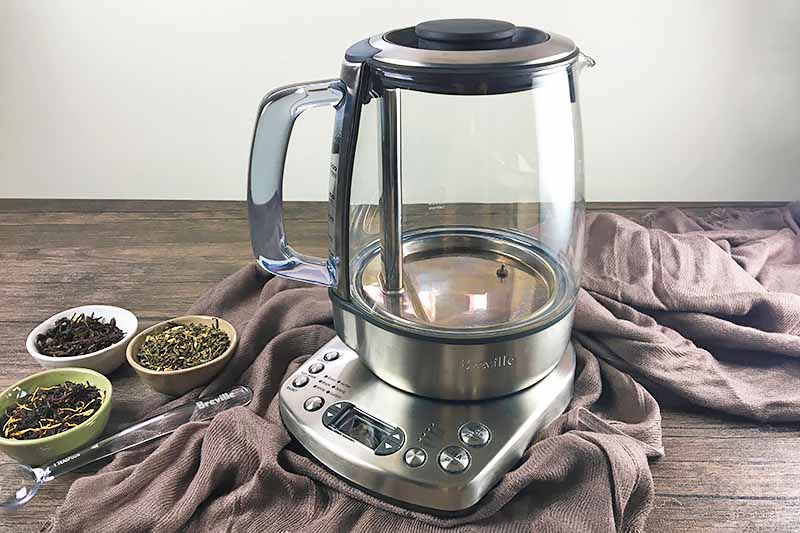
I’ve been really curious to give this a shot. I love green tea and drink it regularly but haven’t had white before.
I haven’t tried white tea. I wanna give this a try. I will surely check the white tea varieties mentioned here for further details.